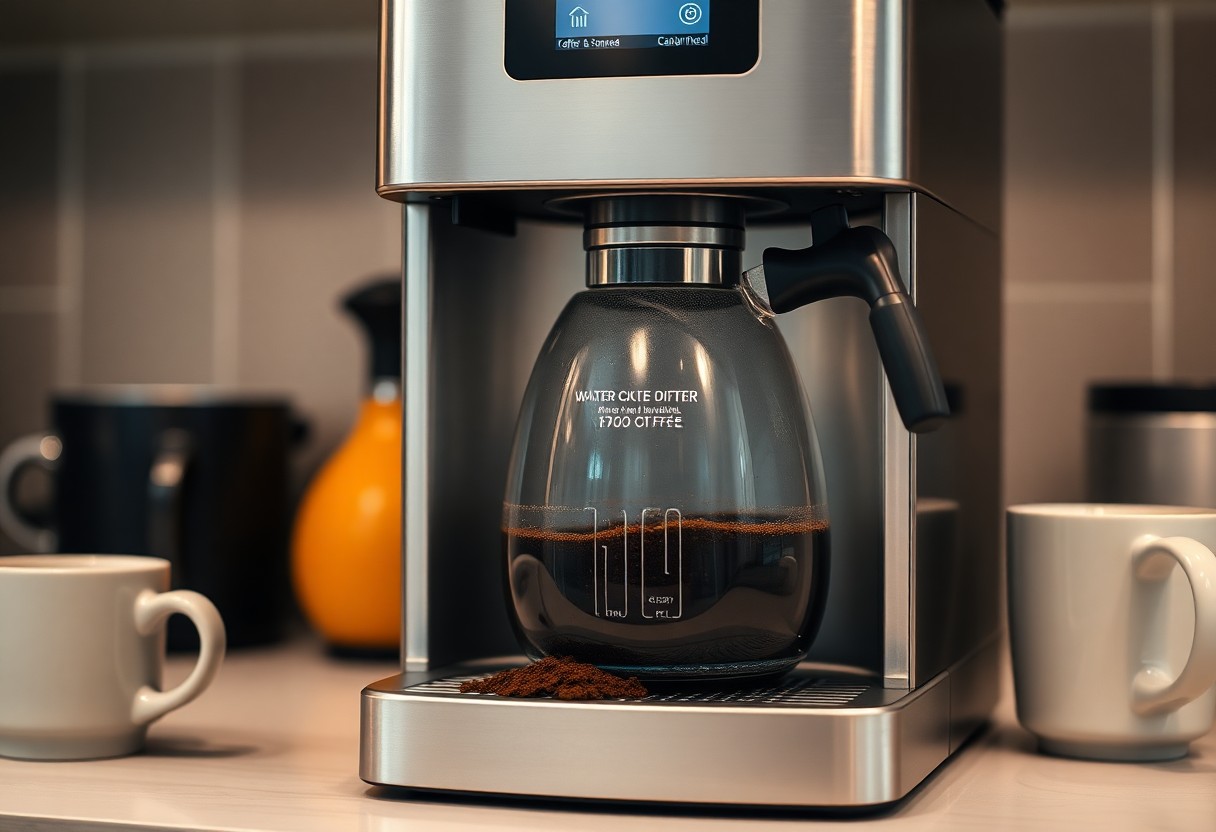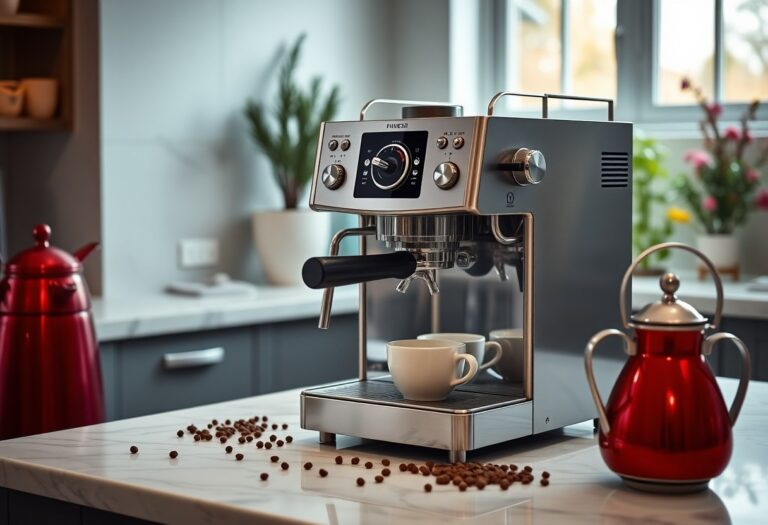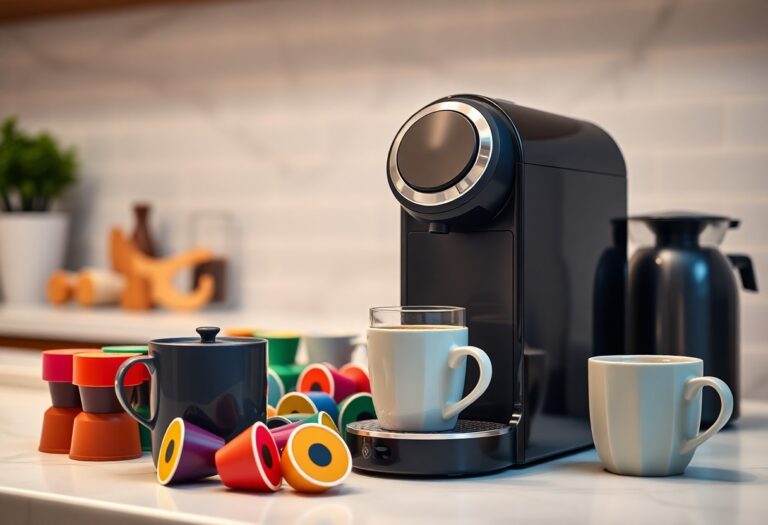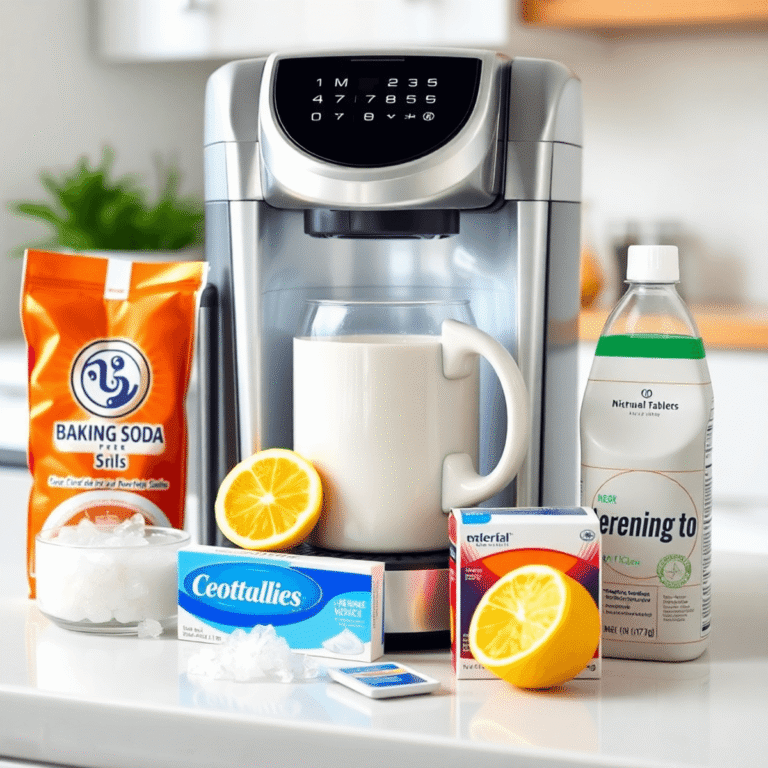What is the Common Problem of Coffee Machines – Troubleshooting
Machines can sometimes fail to deliver that perfect cup of coffee you rely on each morning, leading to frustration. You may encounter issues like leaks, brewing errors, or odd noises that disrupt your routine. Understanding these common problems will help you troubleshoot effectively, saving both time and money. In this post, you’ll uncover imperative insights into identifying and fixing the most common malfunctions in your coffee machine, ensuring your next brew is just as delightful as the last.
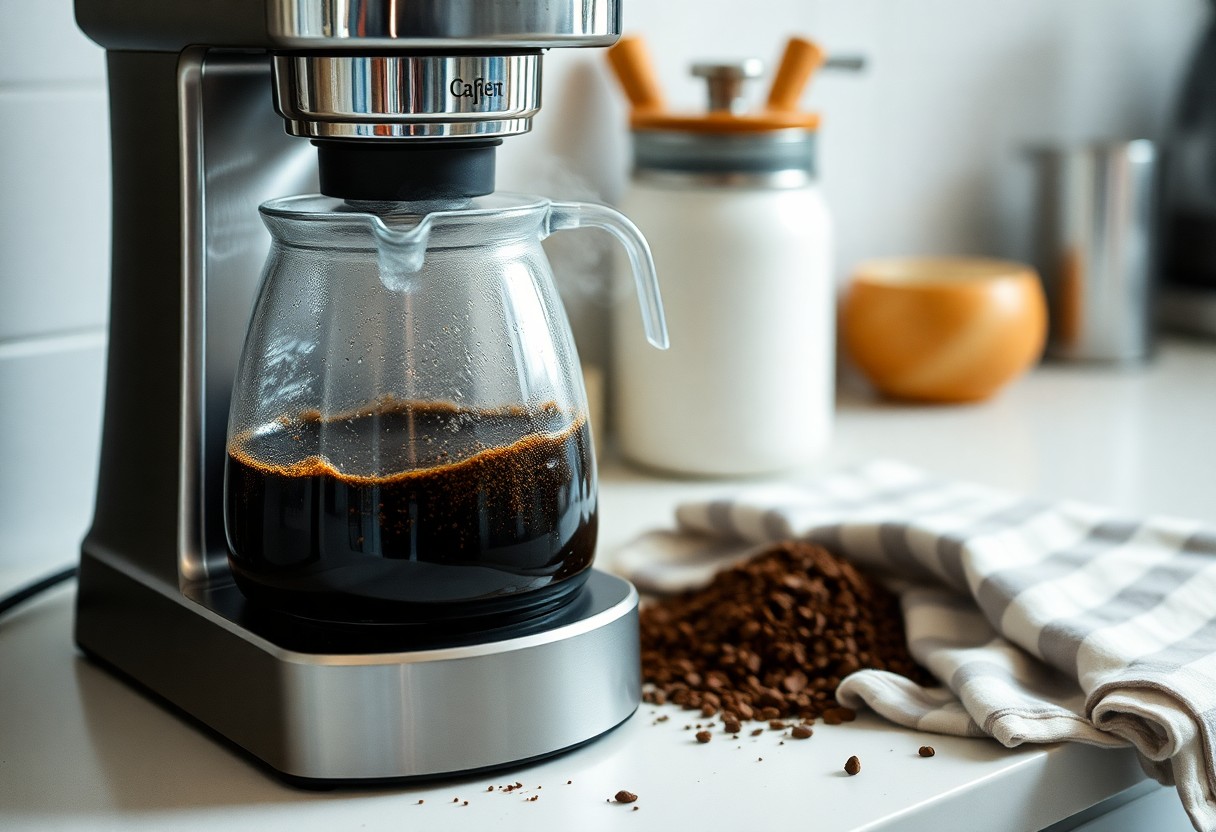
Key Takeaways:
- Recognize that clogs in the coffee grounds or water lines can lead to brewing issues, and regular cleaning can prevent this.
- Be aware that inconsistent brewing temperatures can affect the flavor; calibrating your machine can help maintain optimal performance.
- Inspect water quality, as hard water can cause buildup and affect machine efficiency; consider using filtered water.
- Pay attention to the machine’s maintenance indicators, as they can signal when descaling or other maintenance is needed to keep the appliance running smoothly.
- Check for electrical issues or faulty wiring that may hinder operation, and consult the user manual for specific troubleshooting steps.
The Usual Suspects: Identifying Common Coffee Machine Malfunctions
Understanding the typical issues that can arise with coffee machines allows you to troubleshoot effectively and keep your coffee flowing smoothly. Common malfunctions often stem from everyday wear and tear, mishandling, or even improper maintenance. Recognizing the signs early can save you time and frustration when you’re simply craving your daily caffeine fix.
Leaks and Drips: Water Woes
Water leakage is a frequent complaint among coffee machine users. If you find water pooling underneath your machine, it may be an indication of worn-out seals, loose connections, or even a cracked water reservoir. Identifying the source of the leak quickly helps prevent damage to your countertops and appliances.
Clogging: When Your Machine Gets Stuck
Clogging can be a major headache, manifesting when your machine fails to brew or flows water slowly. This occurs primarily due to mineral buildup from hard water, coffee residue, or even oils from coffee beans. Regular cleaning with descaling solutions or vinegar can combat this problem, ensuring a smoother operation and better-tasting coffee. Keep an eye on your machine’s water flow and act promptly if you notice uneven pressure; addressing this right away can prolong your machine’s life.
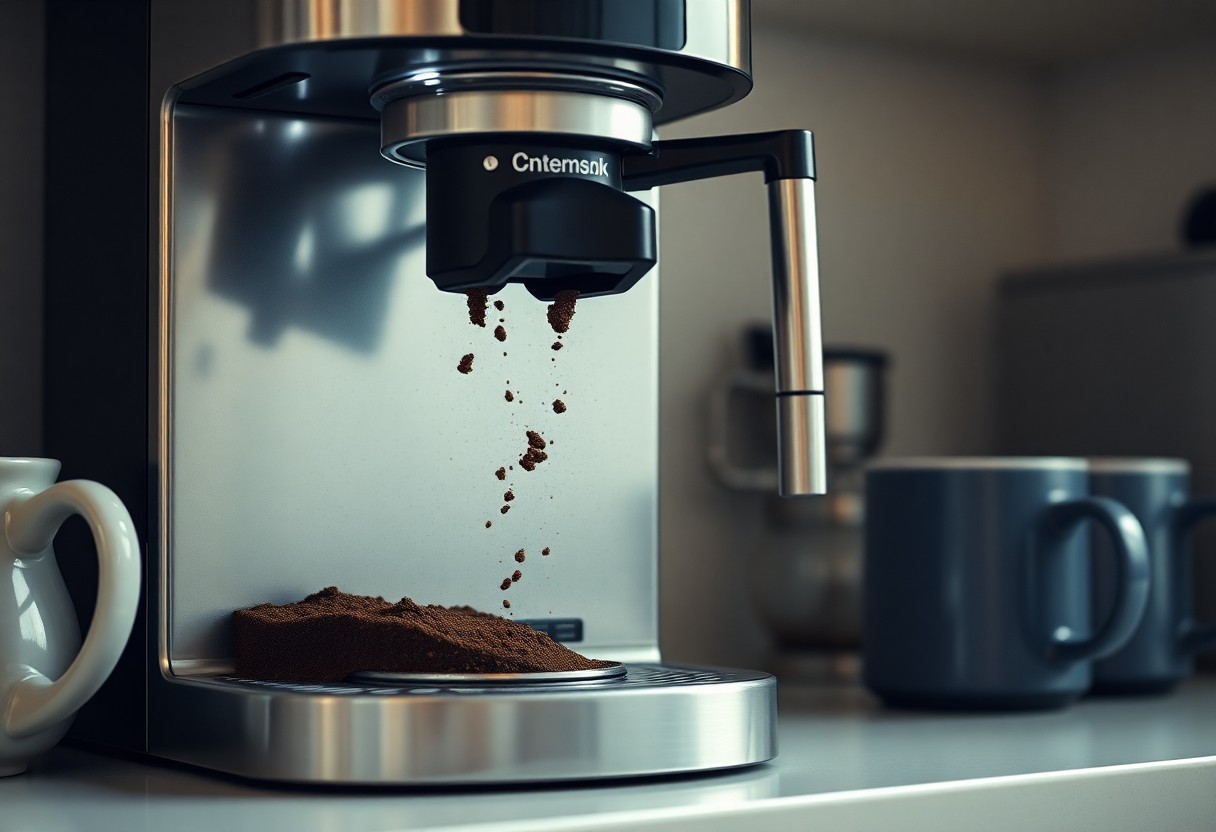
Brewing Troubles: Quality at Stake
Brewing issues can significantly affect your coffee quality, leaving you disappointed in your daily ritual. Inconsistent brewing temperatures, along with strength and flavor problems, may indicate deeper issues with your coffee machine. Effective troubleshooting can help you regain control over your coffee experience.
Inconsistent Temperature: The Heat of the Moment
| Symptoms | Possible Causes |
|---|---|
| Coffee is lukewarm or burned | Incorrect thermostat settings or broken heating element |
| Uneven extraction | Clogged water lines or faults in the brewing cycle |
Weak or Bitter Coffee: The Flavor Dilemma
If your coffee tastes weak or bitter, it’s time to scrutinize the brewing process. Weak coffee often results from inadequate brewing time, where water passes through too quickly, extracting insufficient flavors. On the other hand, too much extraction can lead to bitterness, commonly caused by over-grinding or prolonged brewing times. Adjusting your grind size and brewing duration can help achieve the desired balance; aim for a brewing time of 4-5 minutes for optimal extraction. Fine-tuning these variables can enhance your coffee and satisfy your taste buds.
The Maintenance Blind Spot: Neglecting Routine Care
Falling into a pattern of neglecting routine maintenance can turn your dependable coffee machine into a source of frustration. Small issues may seem unimportant at first, but over time, lack of care can lead to larger problems that compromise both taste and functionality. Regular tasks like cleaning and descaling not only enhance your coffee’s flavor but also extend the lifespan of your machine. Staying on top of these responsibilities ensures you enjoy rich, flavorful coffee and helps you avoid costly repairs or replacements.
Descaling Decline: The Importance of Regular Cleaning
Over time, mineral deposits accumulate in your coffee machine, especially in regions with hard water. These deposits can lead to clogs and diminished performance, making regular descaling a key step in maintaining optimal function. Skipping this imperative task not only impacts your coffee’s flavor but also shortens the lifespan of your equipment. Monthly descaling with a suitable solution can keep your machine running smoothly and your coffee tasting its best.
Parts Replacement: Knowing When to Say Goodbye
Monitoring the condition of your coffee machine’s parts is fundamental to its longevity and performance. If you notice unusual noises, leaks, or decreased brewing efficiency, it may signal that certain components have reached the end of their life cycle. From worn-out water filters to failing heating elements, understanding when and what to replace can save you from more extensive damage down the line.
Your coffee machine consists of various parts, each with a defined lifespan. For instance, most water filters need replacement every two months for best performance. Heating elements typically last about 5 years, but can fail prematurely due to scale build-up. Observing changes in brewing time or temperature can indicate wear. Regular inspection and timely replacements ensure your machine doesn’t just brew coffee; it brews consistently delicious coffee. Keeping track of these maintenance needs will enhance your daily ritual while extending the life of your trusty appliance.
User Error: Missteps in Operation
User error stands as one of the primary culprits behind coffee machine failures. Many enthusiasts overlook simple operational guidelines, which can lead to disappointing results. Familiarizing yourself with your specific coffee machine’s requirements can save you from excessive troubleshooting. Exploring 7 common coffee machine problems and how to fix them – Saga provides a deeper understanding of potential pitfalls and solutions to improve your brewing experience.
Incorrect Measurements: The Recipe for Disaster
Precision in coffee-making is vital, and incorrect measurements of coffee grounds or water can significantly affect the flavor and strength. Using a standard coffee scoop or scale ensures you get the perfect ratio for your favorite brew. A typical recommendation is to use two tablespoons of coffee for every six ounces of water, but personal taste may vary. Adjusting this balance can transform a bland cup into a delightful experience.
Settings Gone Wrong: Navigating the Control Panel
Understanding your coffee machine’s control panel can be overwhelming, leading to settings that can drastically alter your coffee output. Many machines come equipped with different brewing modes, temperature settings, and brewing times. If you’re selecting the wrong combination, you could end up with coffee that’s either over-extracted and bitter or under-extracted and weak. Taking time to consult your user manual can guide you through the options, enabling you to fine-tune your brews according to your flavor preferences.
Beyond just the basics, modern coffee machines may include specialized settings for different types of coffee, such as espresso or cold brew, adding complexity to your brewing routine. Take advantage of these features by experimenting with various options to find what suits you best. You might also find customizable settings that allow you to save your preferred configurations, streamlining your coffee-making process. Invest the time to familiarize yourself with these capabilities to elevate your daily coffee experience.
Seeking Solutions: Troubleshooting Steps You Can Take
Once you’ve identified a problem with your coffee machine, a series of simple troubleshooting steps can often bring your beloved appliance back to life. Start by checking the power source, ensuring the machine is plugged in and that outlets work. Inspect water levels and cleanliness in your machine. Also, descaling regularly will keep your coffee maker running smoothly, allowing you to enjoy your brew without interruption.
Diagnosing Issues: A Step-by-Step Guide
| Step | Action |
| 1 | Verify that the coffee maker is plugged in and the outlet is functional. |
| 2 | Check the water reservoir to ensure it’s filled with clean water. |
| 3 | Inspect and clean the coffee filter to prevent clogs. |
| 4 | Run a cycle with a descaling solution if you notice scale buildup. |
| 5 | Consult your user manual for specific troubleshooting tips related to your model. |
When to Call in Reinforcements: Professional Repair vs. DIY
Determining whether to attempt a DIY fix or call a professional depends on the issue’s complexity. Minor problems like cleaning or descaling are manageable for most users, but persistent or severe malfunctions often warrant professional attention. If you notice unusual sounds, leaks, or components that are cracked or burnt, these may indicate deeper internal issues that require expert repair.
For instance, if simple troubleshooting steps fail to resolve persistent error messages or a non-functional brew cycle, reaching out to a qualified repair technician is likely the best route. Attempting complex repairs without the necessary expertise runs the risk of further damage and can be dangerous due to electrical components. Weigh the cost of potential repairs against replacing the machine outright to make an informed decision.
Conclusion
With these considerations, you can effectively troubleshoot common issues with your coffee machine, ensuring a consistently great cup of coffee. Whether it’s clogs, brewing inconsistencies, or electrical problems, knowing how to address these concerns will enhance your experience. Don’t hesitate to consult the user manual for specific guidance related to your model, and consider performing regular maintenance to prevent future issues. By staying proactive, you not only extend the lifespan of your coffee machine but also enjoy the perfect brew every time.
FAQ
Q: Why is my coffee machine not turning on?
A: When your coffee machine doesn’t turn on, it may be due to several reasons. First, check if it is properly plugged into a functioning electrical outlet. If it is, inspect the power cord for any damage. Additionally, many coffee machines have a reset button or a fuse inside that may need to be addressed. If you’ve tried these steps and it still doesn’t turn on, the issue could lie within the internal circuitry, which might require professional assistance.
Q: My coffee machine is leaking water; what should I do?
A: Water leaks can occur for various reasons. Start by ensuring that the water reservoir is sitting correctly and not overflowing. Check the carafe to see if it’s cracked or chipped, as this can also lead to leaks. Additionally, ensure that all seals and gaskets are intact and free from damage. If there are clogs in the water lines or the brew group, those may require cleaning or servicing. If these steps don’t resolve the issue, consulting the manufacturer’s manual or tech support may be necessary.
Q: Why is my coffee not brewing properly?
A: If your coffee is not brewing, there might be multiple factors at play. First, confirm that the coffee grounds are not too fine, which can lead to clogging in the filter. Ensure that the water reservoir is filled and that the brewing components are properly assembled. Often, descaling your coffee machine can help if minerals are built up within. If these issues aren’t the cause, consider checking the machine’s settings or the strength of the coffee being used.
Q: My coffee is tasting bitter; what could be the reason?
A: Bitter coffee can arise from various factors. A common cause is over-extraction, where coffee grounds are brewed for too long. This can happen if the brew cycle is too long or if the coffee grind is too fine. Additionally, stale coffee beans or water that is too hot can contribute to bitterness. It’s advisable to use freshly roasted beans and maintain the right brewing temperature. Adjusting the grind size and brew duration could help as well.
Q: What should I do if my coffee machine is showing error messages?
A: Error messages on your coffee machine might indicate specific issues, such as descaling requirements or problems with the water supply. Consult the user manual that came with your coffee machine; it usually contains a section on troubleshooting common error codes. Following those instructions can often resolve the situation. If the problem persists after troubleshooting, contacting customer support for guidance is a good next step.

